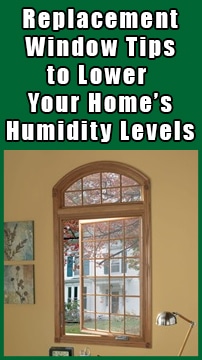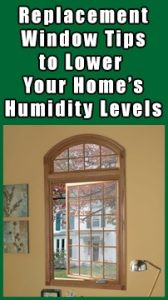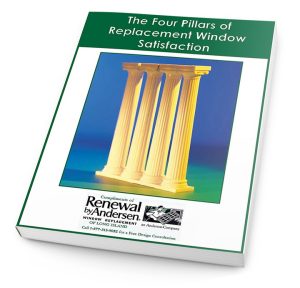

 The high humidity in the New Jersey and New York Metro region creates many challenges for homeowners, but the right replacement windows can help. Keeping the moisture at bay in basements and partially underground rooms is a constant battle for many homeowners with older homes. If you let moisture infiltration get out of control, you’ll run the risk of developing mold and mildew, which can be real health concerns for you and your home. Structural damage caused by water seeping through walls can be very expensive to repair. Extreme moisture strains your air conditioning system, sending utility bills skyrocketing and comfort levels dropping.
The high humidity in the New Jersey and New York Metro region creates many challenges for homeowners, but the right replacement windows can help. Keeping the moisture at bay in basements and partially underground rooms is a constant battle for many homeowners with older homes. If you let moisture infiltration get out of control, you’ll run the risk of developing mold and mildew, which can be real health concerns for you and your home. Structural damage caused by water seeping through walls can be very expensive to repair. Extreme moisture strains your air conditioning system, sending utility bills skyrocketing and comfort levels dropping.
Maintaining indoor air quality is important for your health and your comfort. Updating home windows will improve moisture control. Plus, advanced technology and window design improves ventilation, makes cleaning easier and helps you control your utility budget. Here’s what you need to know about replacement windows and home air quality control measures for your New York or New Jersey home.
Using Cross Ventilation to Control Moisture
Many factors impact humidity in your home. Moisture associated with rainy days and normal climate conditions are major contributors, but activity in your home such as cooking and showering also raises humidity levels.
Did you know that normal breathing raises the relative humidity in your home? The average person generates approximately 200 milliliters of water vapor every hour while he or she is awake and around 20 milliliters when sleeping.
Mold and mildew colonies may trigger allergic reactions and asthma attacks and often produce offensive odors. Proper ventilation helps homeowners control odor and improve air quality. Installing operable windows and/or doors on opposite walls enables passive ventilation for better moisture control.
Strategizing with Replacement Window Styles
Replacing aging windows that allow moisture to enter your indoor spaces can be part of an excellent strategy to combat excessive indoor moisture problems. Custom-built windows with superior weather-stripping and structural integrity naturally improve moisture control. But, you’ll want the option to open your windows to occasionally air out your home or enjoy a cool evening breeze. The window style you select can make a huge difference. Here are three examples that show why window style choices should be part of your ventilation strategy.
Planning Home Window Upgrades for Safety, Health and Comfort
When selecting replacement windows and patio doors for your home keep these tips in mind.
As temperatures rise, moisture laden air makes you feel hotter and stickier. Your family’s health and comfort are important to us. Our Renewal by Andersen replacement window specialists are here to help you develop a ventilation strategy based on your home’s floor plan and family activities. To schedule a free, no-obligation home consultation simply fill in the short form on this page or give us a call at (866) 609-5033.

Learn Everything You Need to Know BEFORE Buying Replacement Windows